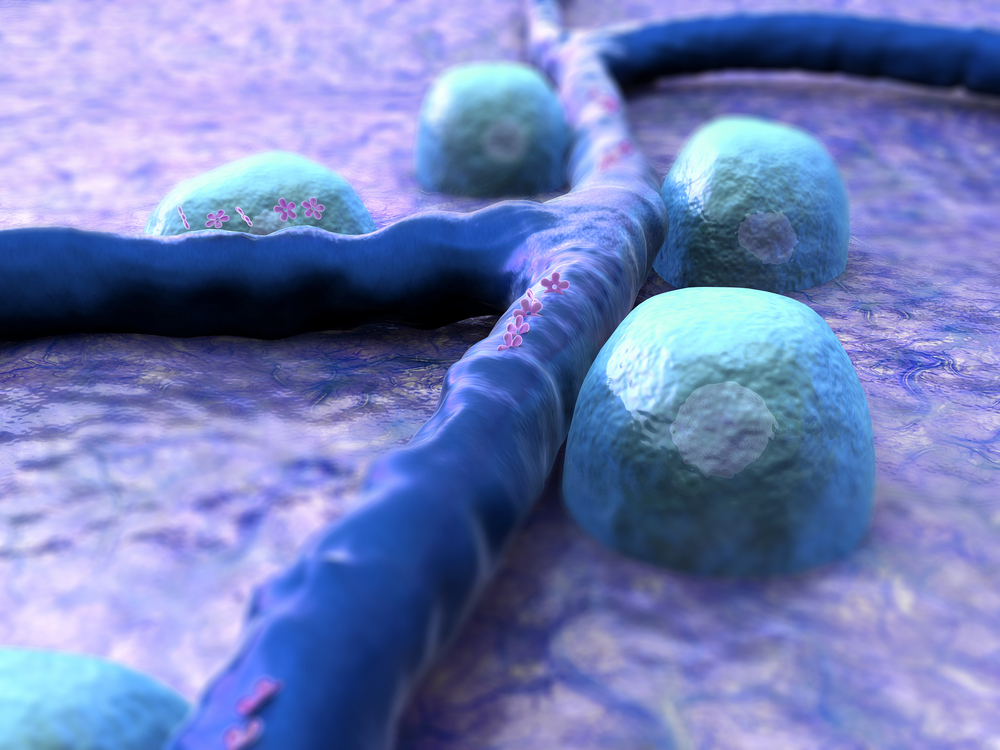 In a new study entitled “TGF-β Promotes Heterogeneity and Drug Resistance in Squamous Cell Carcinoma,” researchers at The Rockefeller University discovered TGF-β is a key driver of tumor heterogeneity and drug resistance. Their findings will potentially lead to new therapeutics for a variety of cancers, including lung cancer. The study was published in the journal Cell.
In a new study entitled “TGF-β Promotes Heterogeneity and Drug Resistance in Squamous Cell Carcinoma,” researchers at The Rockefeller University discovered TGF-β is a key driver of tumor heterogeneity and drug resistance. Their findings will potentially lead to new therapeutics for a variety of cancers, including lung cancer. The study was published in the journal Cell.
A key step to cancer progression and recurrence is the ability of tumor-initiating stem cells to resist standard therapies, repopulating the tumor with cancerous cells. Another key feature of tumors that contributes to therapy resistance and cancer spread is their intrinsic heterogeneity. However, the mechanisms that drive tumor heterogeneity and drug-resistance are still not completely understood. While genetic alterations are a significant contributor to tumors’ heterogeneity, other non-genetic factors, particularly those stemming from tumors’ microenvironment such as signaling factors, oxygen, and metabolites are also plausible players in heterogeneity.
The research team led by Elaine Fuchs at The Rockefeller University hypothesized that changes in tumor microenvironment metabolic gradients could impact the metabolism of cancer stem cells, leading to tumor heterogeneity and drug-resistance. Previous work developed in the lab had already showed that TGF-β (short for transforming growth factor beta), a factor released by cells that restricts proliferation in a variety of tissues, is important for maintaining a healthy proliferation of skin stem cells, since when these cells lose the ability to respond to TGF-β they abnormally proliferate, giving rise to tumors. Intriguingly, however, TGF-β was also shown to promote the formation of metastasis in a wide-range of cancers.
The authors tackled this apparent controversy and constructed a system to track TGF-β signaling in stem cells in vivo. The team used a mouse model of skin squamous cell carcinoma to analyze TGF-β signaling to squamous cell carcinoma stem cells (SCC-SCs). This system allowed researchers to manipulate TGF-β.
The team found that only cancer stem cells located in close proximity of blood vessels (tumors normally induce the formation of new blood vessels, a process known as angiogenesis) are exposed to higher levels of TGF-β signaling, whereas those located far from blood vessels do not. Notably, they observed that when TGF-β expose stem cells while proliferating at a slower rate they are more prone to invade and move away from the tumor. On the contrary, stem cells not exposed to TGF-β signaling proliferate with higher rates but move much less. The authors concluded that perivascular TGF-β results in heterogeneous patterns of SCC stem cells. This was further confirmed by analyzing gene expression of both TGF-β responders and non-responders: the former exhibited higher levels of enzymes in the glutathione pathway, an important antioxidant and detoxifying factor. Glutathione activation renders TGF-β responders resistant to damage by anti-cancer drugs and oxidative stress.
In conclusion, the authors found TGF-β signaling is a strong driver of heterogeneity in SCC-SCs, altering both tumor features and drug resistance capacity. Despite the model used, their findings offer promising results for other cancers, including lung cancer.
Elaine Fuchs, lead author commented in a press release, “There are several reasons why some cancer stem cells, the cells at the root of tumors and metastases, can withstand therapy meant to eradicate them. Our results point to the importance of the environment immediately surrounding the skin cancer stem cells, specifically, their exposure to the signal TGF-β. Ultimately, we hope this new insight could lead to better means for preventing the recurrence of these life-threatening cancers, which can occur in the skin, head, neck, esophagus, and lung, and often evade treatment.”


